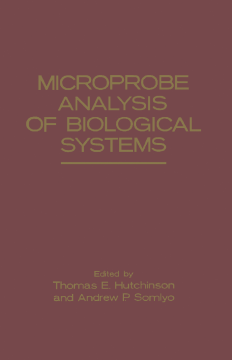
Additional Information
Book Details
Abstract
Microprobe Analysis of Biological Systems covers the proceedings of the 1980 Microprobe Analysis of Biological Systems conference held at Battelle Conference Center in Seattle, Washington. Most of the major laboratories in the field of biological microanalysis in the United States, England, Scotland, France, and Germany are represented. The conference presents the findings, theories, techniques, and procedures of the laboratory represented, no matter how tentative and exploratory.
This book is divided into four parts encompassing 22 chapters that focus on biological applications of microprobe analysis. The introductory part describes the application of electron microprobe and X-ray microanalyses in studies of epithelial transport, avian salt gland, electrolyte transport, and acrosome reaction. The subsequent part covers the application of microprobe techniques in the analysis of cardiac, skeletal, vascular smooth, and freeze-dried muscles. It also describes a method for obtaining erythrocyte preparations for validating biological microprobe methods and the continuum-fluorescence effect on thick biological tissue. The method using freeze-substitution to localize calcium in quick-frozen tissue for X-ray microanalysis is also explained.
The third part of the book tackles the principles, basic features, and applications of electron energy-loss spectroscopy. Discussions on the use of inner-shell signals for a quantitative local microanalysis technique; theoretical study of the energy resolution; and collection efficiency of a magnetic spectrometer are also included. The final part covers the elemental distribution in single erythrocytes using X-ray microanalysis. It also discusses the fundamentals of cryosectioning process for X-ray microanalysis of diffusible elements and the freezing behavior of a number of chemically different gels chosen for their partial resemblance to biological structures. Considerable chapters contain materials and methods, results, discussions, conclusions, and references.
This book will be of value to scientists interested in elemental and ion transport within cells and between cells and extracellular compartments.
